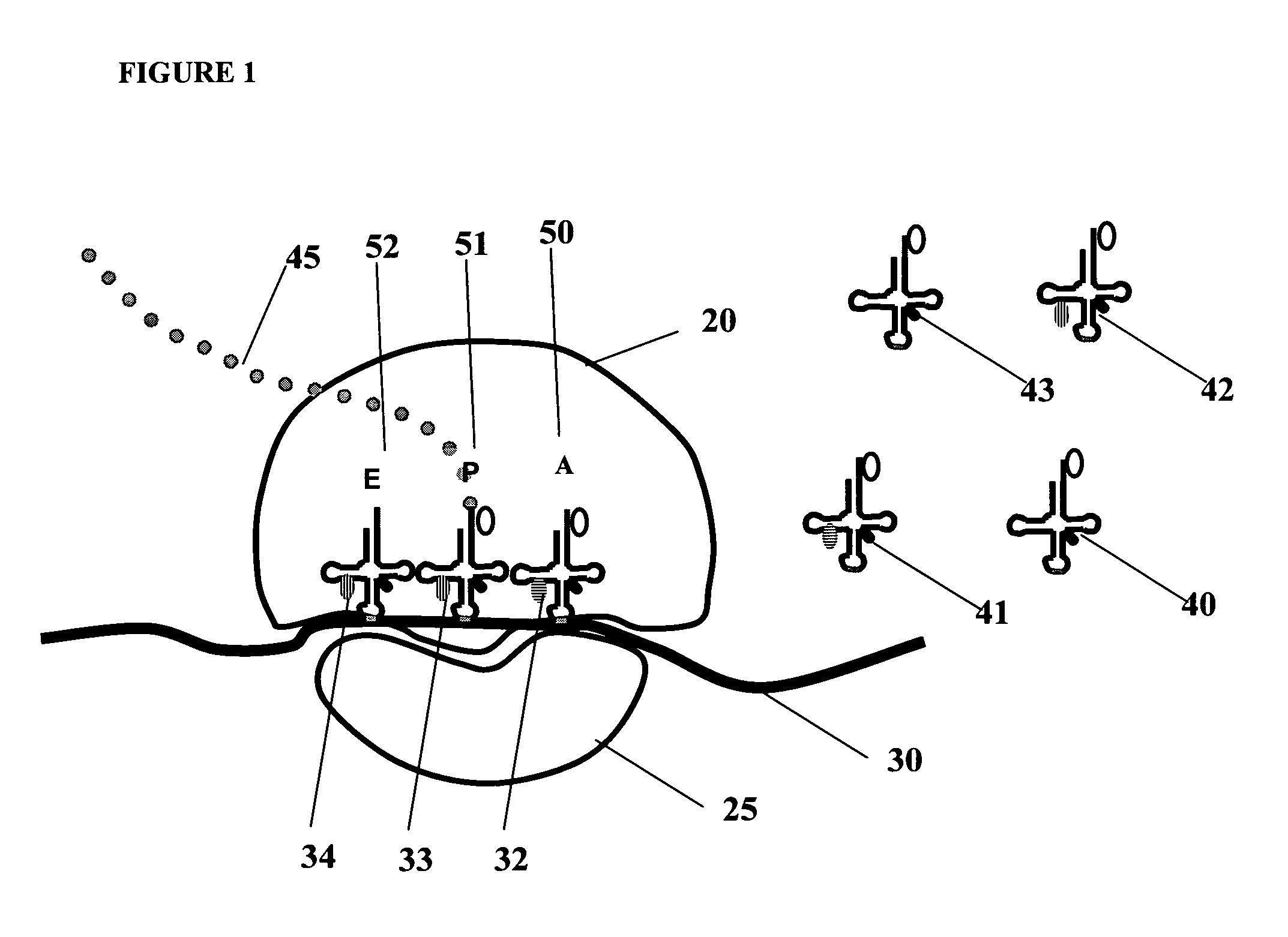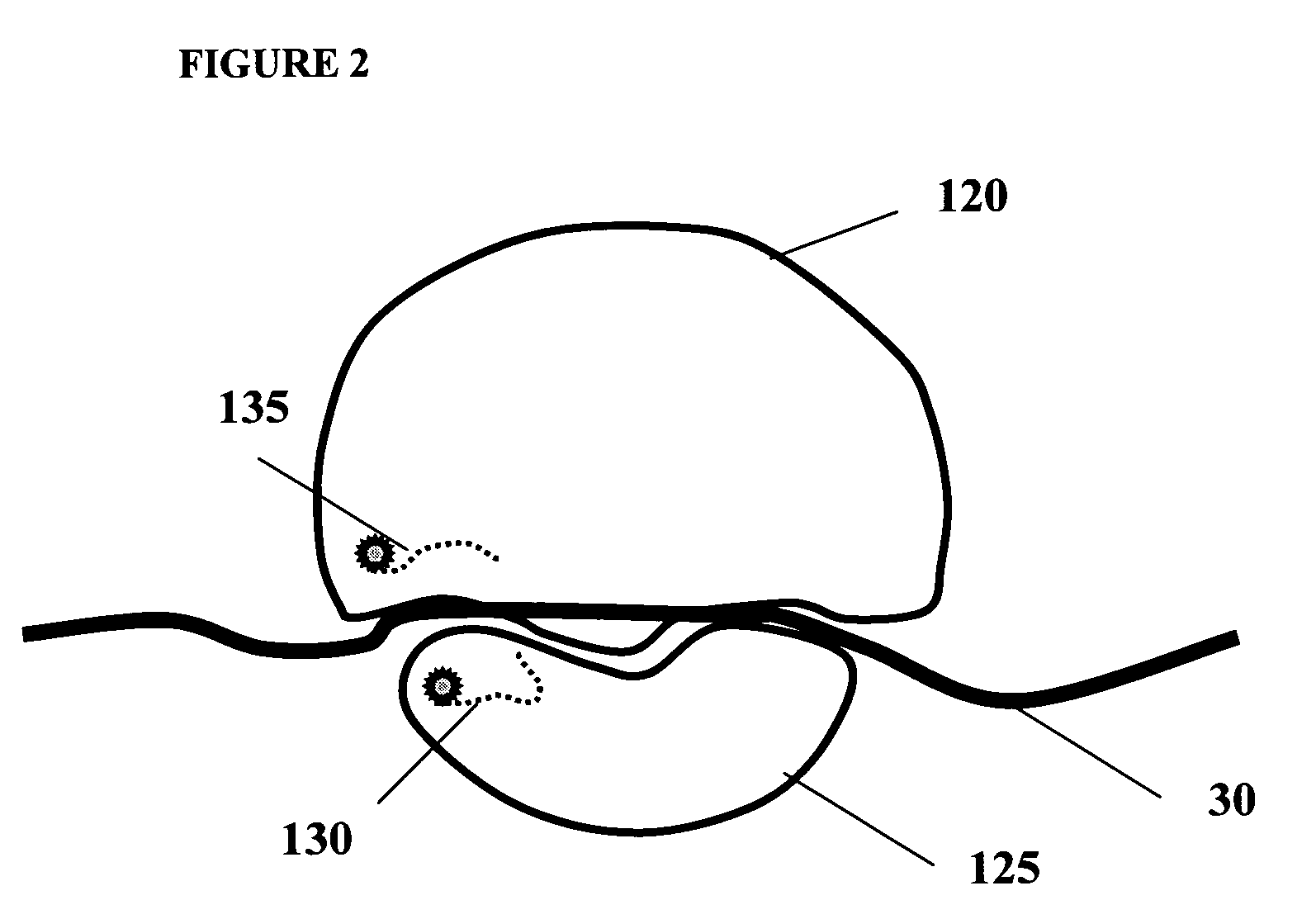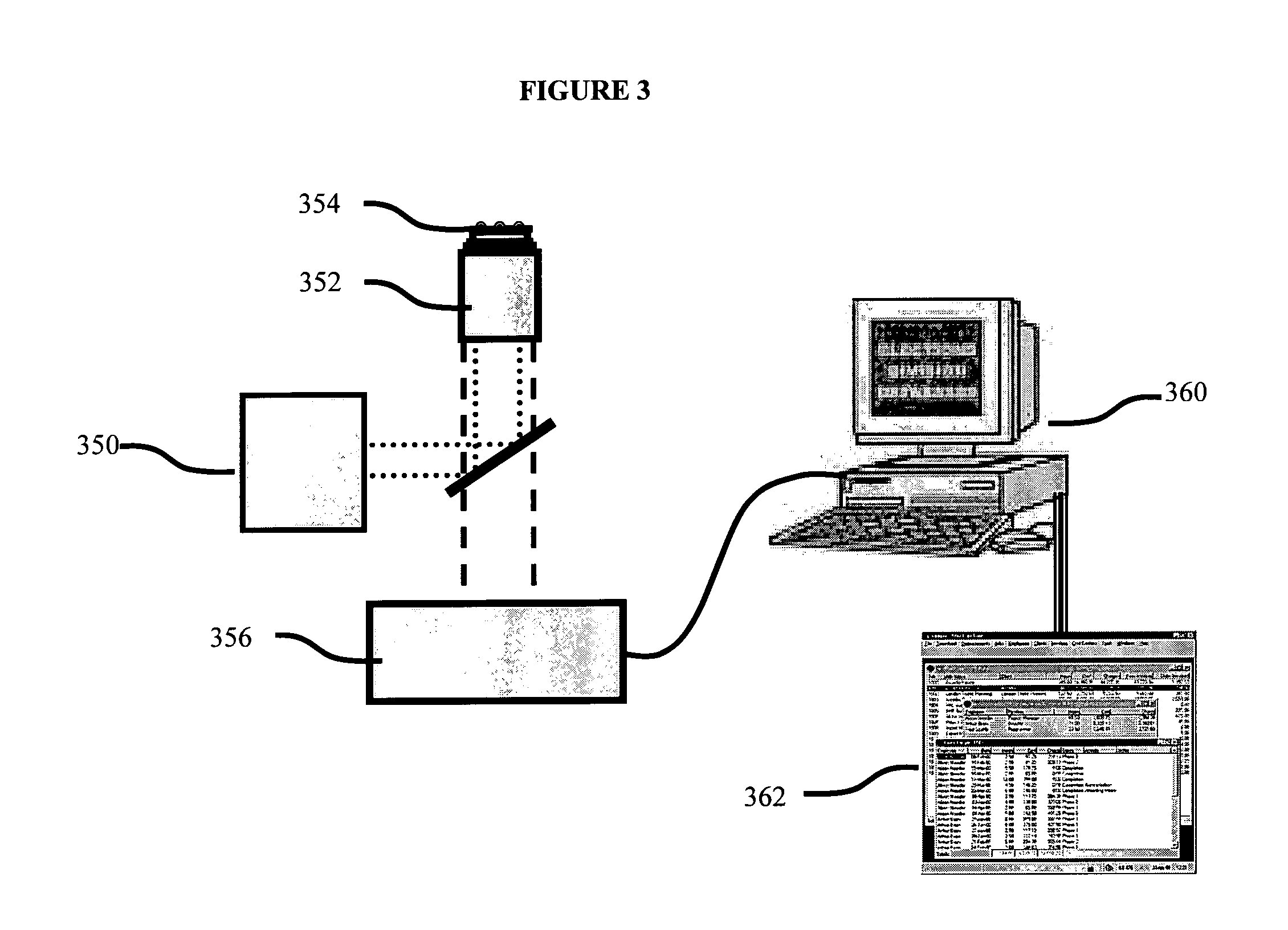Systems and methods for measuring translation activity in viable cells
a translation activity and cell technology, applied in the field of translation system and method for measuring translation activity, can solve the problems of inefficient intra- and intercellular communication, decreased availability of enzymes, and inability to efficiently remove intracellular damaged substances, and achieve the effect of simple intervention in the cellular machinery
- Summary
- Abstract
- Description
- Claims
- Application Information
AI Technical Summary
Benefits of technology
Problems solved by technology
Method used
Image
Examples
example 1
Labeling Two Parts of the Translational Machinery as a FRET Pair
[0159]Two parts of the translational machinery are labeled as a FRET pair. For example, some tRNAs (FIG. 1) can be labeled with a donor fluorophore, and others with a corresponding acceptor fluorophore. An example of such a pair is FITC (excitation and emission peaks are 494 and 520 nm, respectively) and TMR (excitation and emission peaks at 550 and 573 nm, respectively); when translation is active, such tRNAs are immobilized in two adjacent sites (A and P or P and E) of the ribosome, thereby producing a FRET pair which produces measurable FRET signals. These signals indicate that the A and P sites are populated with labeled tRNAs. A small signal indicates that a low percentage of the A and P sites are populated, and therefore that the translation apparatus is in a state of low production rates. Additional exemplary, non-limiting FRET combinations are listed in Table 3.
TABLE 3Exemplary FRET combinations.Donor fluorophor...
example 2
Labeling One Part of the Translational Machinery with a Single Fluorophore
[0166]The single fluorophore method makes use of the technique of fluorescent anisotropy microscopy (see above). Thus, tRNAs which are freely diffusing in the cytoplasm produce a fluorescent signal that is only weakly polarized (in the polarization oriented as the excitation radiation), but tRNAs which are bound to ribosomes (which are thousands of times more massive) yield a highly polarized fluorescent signal, where the polarization is in the same plane as the excitation radiation.
[0167]According to this embodiment, only one part of the translational machinery is labeled. The total signal is related to the fraction of bound labeled molecules. The more active the translation system, the larger the probability of production of such bound molecules and the larger the signal. Numerous members of the translation machinery can be considered for such assays, yielding particular pieces of information. Some of these ...
example 3
Introduction of the Labeled tRNAs into CHO Cells
[0168]Labeled tRNAs are transfected into CHO cells using TransMessenger transfection reagent (Qiagen, Hilden, Germany) according to the manufacturer's protocol. Transfected cells are placed under a microscope equipped for single molecule detection (Zeiss, Oberkochen, Germany) with an image acquisition device operable at a sufficient rate (10-100 frames per second), and computational units that can acquire and analyze the resulting images and data (FIG. 3). General ribosomal activity is measured.
[0169]For high-throughput screening, transfected cells are cultured in a 96-well plate format, compatible with automated screening. A robot administers one compound out of the library being screened into each well and translation detection is performed. A suitable sampling regime is adopted. The effect of the compound on translation activity is detected in comparison with negative control signal.
PUM
| Property | Measurement | Unit |
|---|---|---|
| pressure | aaaaa | aaaaa |
| capacitance | aaaaa | aaaaa |
| concentration | aaaaa | aaaaa |
Abstract
Description
Claims
Application Information
 Login to View More
Login to View More - R&D
- Intellectual Property
- Life Sciences
- Materials
- Tech Scout
- Unparalleled Data Quality
- Higher Quality Content
- 60% Fewer Hallucinations
Browse by: Latest US Patents, China's latest patents, Technical Efficacy Thesaurus, Application Domain, Technology Topic, Popular Technical Reports.
© 2025 PatSnap. All rights reserved.Legal|Privacy policy|Modern Slavery Act Transparency Statement|Sitemap|About US| Contact US: help@patsnap.com



